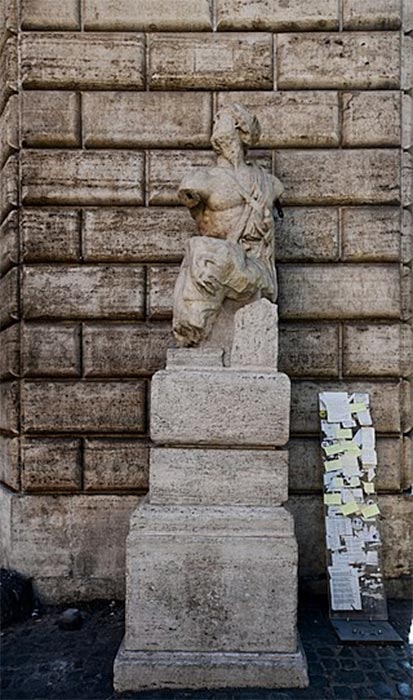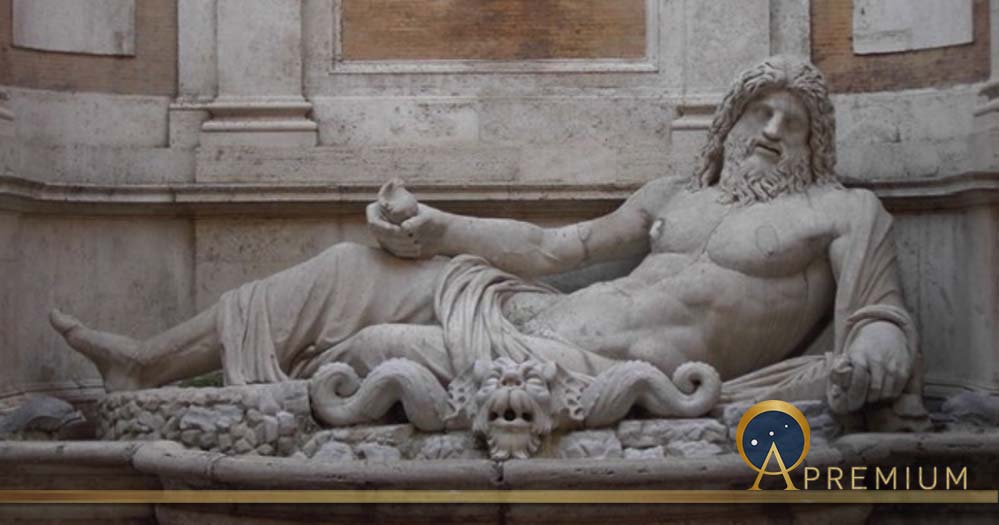Vox Populi: Ancient Gossip of the Talking Statues of Rome
Medieval Italy gave birth to the most talented sculptors, such as Michelangelo and Gian Lorenzo Bernini and Rome hosts some of the most famous sculptures such as the Pieta, Moses, David and the busts of several popes. However, there is a collection of statues which may be less well known to the rest of the world, but to the Romans, the inhabitants of the ‘Eternal City,’ they are known as the “Talking Statues.” Since the 16th century, under cover of darkness, anonymous poets have used these statues to showcase their satirical criticism of various authoritative persona, be it a Pope, mayor, commander of the guards, or whomever deserved the ire of the plebeians.

Basilica of St Peter in History of Rome and the Popes in the Middle Ages (1911)(Public Domain)
The Congrega Degli Arguti
A few centuries ago in Rome, the Congrega degli Arguti, (Congregation of Wit) referred to six statues employed by the Romans as vehicles to vent their dissatisfaction, composed in satirical verse and aimed at authorities. These pasquinades, which means a satirical protest in poetry, were posted in the dead of night, for if apprehended, the authors would face imprisonment and even amputation or death in severe cases. By the first light of dawn, the notes would be removed by the policing patrols of the day. Wandering through the streets of Urbs aeterna (Rome, the Eternal City) looking for some of the affiliates of the Congregation, one might come upon the Piazza Pasquino at the southwest corner of the Palazzo Braschi (Museo di Roma) and meet the most famous of the talking statues: Pasquino.

Pasquino (Architas / CC BY-SA 4.0)
Pasquino First Vox Populi of Rome
In the 15th century, when the rich prelate Oliviero Carafa (1430 - 1515), former cardinal of Naples, acquired the Orsini Palace, located in the Parione district of Rome, he needed to restore the adjacent streets to be worthy of his rank. The sculpture was unearthed from the mud and placed on a pedestal at a corner of the noble residence. The Romans could not believe their eyes. That face with the mutilated nose inspired a series of jokes and unrepeatable epithets among the plebeians, but the intellighentia of the time speculated on who it may have represented. As a matter of fact, it depicts Menelaus, King of Sparta supporting the body of Patroclus, friend of Achilles, after he was slain on the battlefield at Troy.
Like this Preview and want to read on? You can! JOIN US THERE ( with easy, instant access ) and see what you’re missing!! All Premium articles are available in full, with immediate access.
For the price of a cup of coffee, you get this and all the other great benefits at Ancient Origins Premium. And - each time you support AO Premium, you support independent thought and writing.
Dr Roberto Volterri is the author of 40 books including Porte Magiche
Top Image: Marforio at the Musei Capitolini (Public Domain)


















